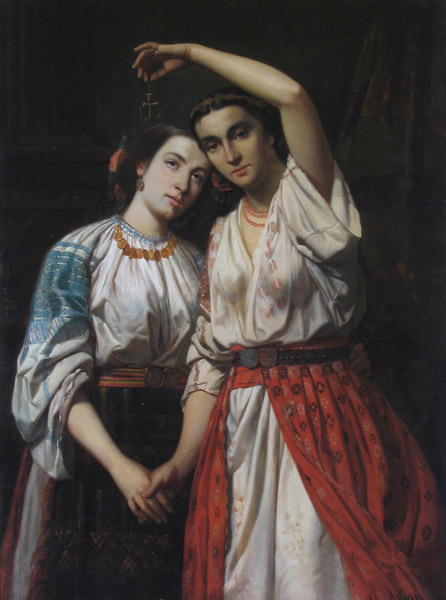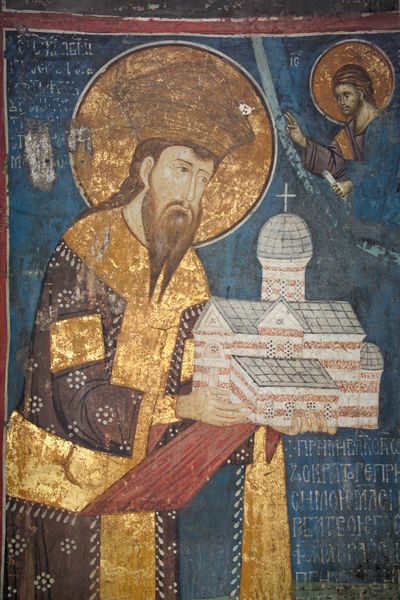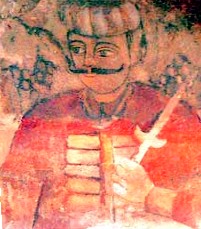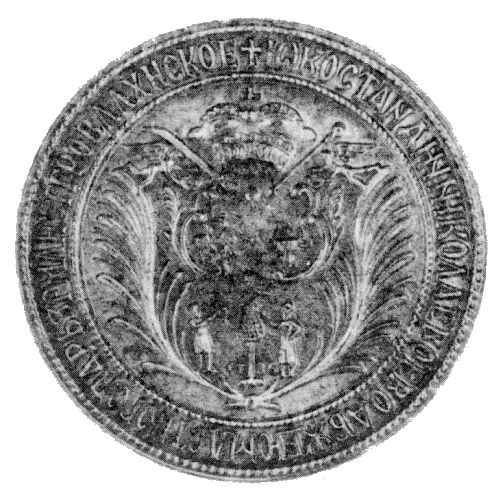|
South Cemetery Church, Focșani
The South Cemetery Church () is a Romanian Orthodox church located at 17 Vâlcele Street in Focșani, Romania. It is dedicated to Saint George. Located inside the city's South Cemetery, tradition holds that the church ''ktetor'' was Vlad the Impaler, grateful for defeating the Ottoman Army in the area. This notion was based on two inscriptions, one of which was carved into the stone above the entrance. Both inscriptions were destroyed by careless workers during an 1887 renovation. The initial structure, made of wood, also had Basarab Țepeluș cel Tânăr and Vlad Călugărul as ''ktetor''s. A marble tablet indicates that Constantine Mavrocordatos rebuilt the church in stone in 1742. The ruined structure was again restored in 1852, by two ''boyar'' families.Description at the Focșani tourist office site The church is ... [...More Info...] [...Related Items...] OR: [Wikipedia] [Google] [Baidu] |
Romanian Orthodox
The Romanian Orthodox Church (ROC; , ), or Romanian Patriarchate, is an autocephalous Eastern Orthodox church in full communion with other Eastern Orthodox Christian churches, and one of the nine patriarchates in the Eastern Orthodox Church. Since 1925, the church's Primate has borne the title of Patriarch. Its jurisdiction covers the territories of Romania and Moldova, with additional dioceses for Romanians living in nearby Ukraine, Serbia and Hungary, as well as for diaspora communities in Central and Western Europe, North America and Oceania. It is the only autocephalous church within Eastern Orthodoxy to have a Romance language for liturgical use. The majority of Romania's population (16,367,267, or 85.9% of those for whom data were available, according to the 2011 census data), as well as some 720,000 Moldovans, belong to the Romanian Orthodox Church. Members of the Romanian Orthodox Church sometimes refer to Orthodox Christian doctrine as ''Dreapta credință'' ("right ... [...More Info...] [...Related Items...] OR: [Wikipedia] [Google] [Baidu] |
Focșani
Focșani (; ) is the capital city of Vrancea County in Romania on the banks the river Milcov, in the historical region of Moldavia. , it has a population of 66,719. Geography Focșani lies at the foot of the Curvature Carpathians, at a point of convergence for tectonic geologic faults, which raises the risk of earthquakes in the vicinity. Though Vrancea County is one of the most popular wine-producing regions in Romania, Odobești being just to the northwest, in Romania, Focșani itself is not considered a wine-producing center. The wine sold as ''Weisse von Fokshan'' in Germany and some other European countries is generally a ''Fetească Albă de Odobești'' wine, and practically a second-rated wine which does not comply to the European Union rules of naming the regions of origin of wines. The vicinity is rich in minerals such as iron, copper, coal, and petroleum. The city administers two villages, Mândrești-Moldova and Mândrești-Munteni. Focșani lies within the strate ... [...More Info...] [...Related Items...] OR: [Wikipedia] [Google] [Baidu] |
Saint George
Saint George (;Geʽez: ጊዮርጊስ, , ka, გიორგი, , , died 23 April 303), also George of Lydda, was an early Christian martyr who is venerated as a saint in Christianity. According to holy tradition, he was a soldier in the Roman army. Of Cappadocian Greek origin, he became a member of the Praetorian Guard for Roman emperor Diocletian, but was sentenced to death for refusing to recant his Christian faith. He became one of the most venerated saints, heroes, and megalomartyrs in Christianity, and he has been especially venerated as a military saint since the Crusades. He is respected by Christians, Druze, as well as some Muslims as a martyr of monotheistic faith. In hagiography, he is immortalised in the legend of Saint George and the Dragon and as one of the most prominent military saints. In Roman Catholicism, he is also venerated as one of the Fourteen Holy Helpers. His feast day, Saint George's Day, is traditionally celebrated on 23 April. Historic ... [...More Info...] [...Related Items...] OR: [Wikipedia] [Google] [Baidu] |
Ktetor
''Ktetor'' () or ''ktitor'' (; ka, ქტიტორი ; ), meaning 'founder', is a title given in the Middle Ages to the provider of funds for construction or reconstruction of an Eastern Orthodox church or monastery, for the addition of icons, frescos, and other works of art. It was used in the Byzantine sphere. A Catholic equivalent of the term is ''donator''. At the time of founding, the ktetor often issued typika, and was illustrated on fresco Fresco ( or frescoes) is a technique of mural painting executed upon freshly laid ("wet") lime plaster. Water is used as the vehicle for the dry-powder pigment to merge with the plaster, and with the setting of the plaster, the painting become ...es ("ktetor portrait"). The female form is () or ''ktitoritsa'' (). Sources * * History of Eastern Orthodoxy Philanthropy Culture of the Byzantine Empire Greek words and phrases {{Orthodoxy-stub ... [...More Info...] [...Related Items...] OR: [Wikipedia] [Google] [Baidu] |
Vlad The Impaler
Vlad III, commonly known as Vlad the Impaler ( ) or Vlad Dracula (; ; 1428/31 – 1476/77), was Voivode of Wallachia three times between 1448 and his death in 1476/77. He is often considered one of the most important rulers in Wallachian history and a national hero of Romania. He was the second son of Vlad Dracul, who became the ruler of Wallachia in 1436. Vlad and his younger brother, Radu, were held as hostages in the Ottoman Empire in 1442 to secure their father's loyalty. Vlad's eldest brother Mircea and their father were murdered after John Hunyadi, regent-governor of Hungary, invaded Wallachia in 1447. Hunyadi installed Vlad's second cousin, VladislavII, as the new voivode. Hunyadi launched a military campaign against the Ottomans in the autumn of 1448, and Vladislav accompanied him. Vlad broke into Wallachia with Ottoman support in October, but Vladislav returned, and Vlad sought refuge in the Ottoman Empire before the end of the year. Vlad went to Moldavia in 144 ... [...More Info...] [...Related Items...] OR: [Wikipedia] [Google] [Baidu] |
Basarab Țepeluș Cel Tânăr
Basarab IV cel Tânăr ("the Young"), also known as Țepeluș ("the little Impaler"), (before 1444 ? – 23 March 1482) son of Basarab II, and grandson of Dan II (1422-1431) was 4 times the voivode of the principality of Wallachia between 1474 and 1482: from Oct to Dec 1474, from Jan 1478 to June 1480, from Nov 1480 to before July 1481, and again from Aug 1481 to July 1482.Constantin Rezachevici - Cronologia critică a domnilor din Țara Românească și Moldova a. 1324 - 1881, Volumul I, Editura Enciclopedică, 2001 This was during an unstable political climate in medieval Wallachia that had another 4 princes ruling for some periods of time in those years. Reigns Basarab IV Țepeluș acceded first to the Wallachian throne in 1474, when with help from Transylvanian voivode Stefan Bathory he overthrew his first cousin Basarab III known as the 'Old'. He was then removed from power within 2 months by Radu III (also called Radu the Handsome), his 2nd cousin, who was brought in b ... [...More Info...] [...Related Items...] OR: [Wikipedia] [Google] [Baidu] |
Vlad Călugărul
Vlad IV Călugărul ("Vlad IV the Monk"; prior to 1425 – September 1495) was the Prince of Wallachia in 1481 and then from 1482 to 1495. Context of his reign His father Vlad Dracul had previously held the throne, as had his brothers Mircea II and Radu the Handsome, and lastly Vlad III Dracula. The 15th century was a very volatile time in Wallachia, with the throne passing first from one then to another of the many princes that desired it. Both of his younger brothers, Vlad III and Radu, had been hostages for a number of years to the Ottoman Sultan, having been offered up to the Ottoman court by their own father, Vlad Dracul, in exchange for the Ottoman's support of Vlad Dracul regaining his throne. His father had first gained the throne following the death of Vlad the Monk's uncle. Both his brothers Mircea II and Vlad III were able military commanders in the field, and both saw success in battle against the Ottomans. In 1447, his brother Mircea II and his father were both ca ... [...More Info...] [...Related Items...] OR: [Wikipedia] [Google] [Baidu] |
Constantine Mavrocordatos
Constantine Mavrocordatos (Greek language, Greek: Κωνσταντίνος Μαυροκορδάτος, Romanian language, Romanian: ''Constantin Mavrocordat''; February 27, 1711November 23, 1769) was a Greeks, Greek noble who served as List of rulers of Wallachia, Prince of Wallachia and List of rulers of Moldavia, Prince of Moldavia at several intervals between 1730 and 1769. As a ruler he issued reforms in the laws of each of the two Danubian Principalities, ensuring a more adequate taxation and a series of measures amounting to the emancipation of Serfdom, serfs and a more humane treatment of slaves. Life First rules Born in Constantinople (now Istanbul) as a Phanariotes, Phanariote member of the Mavrocordatos family, Constantine succeeded his father, Nicholas Mavrocordatos, as Prince of Wallachia in 1730, after obtaining boyar support. He was deprived in the same year, but again ruled the principality five more times from 1731 to 1733, from 1735 to 1741, from 1744 to 1748, fro ... [...More Info...] [...Related Items...] OR: [Wikipedia] [Google] [Baidu] |
Narthex
The narthex is an architectural element typical of Early Christian art and architecture, early Christian and Byzantine architecture, Byzantine basilicas and Church architecture, churches consisting of the entrance or Vestibule (architecture), vestibule, located at the west end of the nave, opposite the church's main altar. Traditionally the narthex was a part of the church building, but was not considered part of the church proper. In early Christian churches the narthex was often divided into two distinct parts: an esonarthex (inner narthex) between the west wall and the body of the church proper, separated from the nave and aisles by a wall, arcade (architecture), arcade, colonnade, screen, or rail, and an external closed space, the exonarthex (outer narthex), a court in front of the church façade delimited on all sides by a colonnade as in the first Old St. Peter's Basilica, St. Peter's Basilica in Rome or in the Basilica of Sant'Ambrogio in Milan. The exonarthex may have bee ... [...More Info...] [...Related Items...] OR: [Wikipedia] [Google] [Baidu] |
Monument Istoric
The National Register of Historic Monuments () is the official English name of the Romania government's list of national heritage sites known as Monumente istorice. In Romania, these include sites, buildings, structures, and objects considered worthy of preservation due to the importance of their Romanian cultural heritage. The list, created in 2004, contains places that have been designated by the Ministry of Culture and National Patrimony of Romania and are maintained by the Romanian National Institute of Historical Monuments, as being of national historic significance. Criteria A ''Monument istoric'' ("Historic monument") is defined as: * An architectural or sculptural work, or archaeological site. * Having significant cultural heritage value, and of immovable scale. * Perpetuating the memory of an event, place, or historical personality. ''Monumente istorice'' cultural properties include listed Romanian historical monuments from the National Register of Historic Monume ... [...More Info...] [...Related Items...] OR: [Wikipedia] [Google] [Baidu] |
Ministry Of Culture And Religious Affairs (Romania)
The Ministry of Culture of Romania () is one of the ministries of the Government of Romania. The current position holder is Natalia-Elena Intotero from the Social Democratic Party (Romania), Social Democratic Party (PSD). The Romanian National Institute of Historical Monuments, part of this ministry, maintains the List of monumente istorice in Romania, list of historical monuments in Romania. The list, created in 2004–2005, contains Monument istoric, historical monuments entered in the National Cultural Heritage of Romania. List of Culture Ministers See also * Culture of Romania * List of monumente istorice in Romania, List of historical monuments in Romania References External links MCC.ro* GUV.roRomanian National Institute of Historical MonumentsList of Historical Monumentsat Romanian Ministry of Culture and National Patrimony (in Romanian) at Romanian National Institute of Historical Monuments (in Romanian) Government ministries of Romania, Culture Cult ... [...More Info...] [...Related Items...] OR: [Wikipedia] [Google] [Baidu] |







